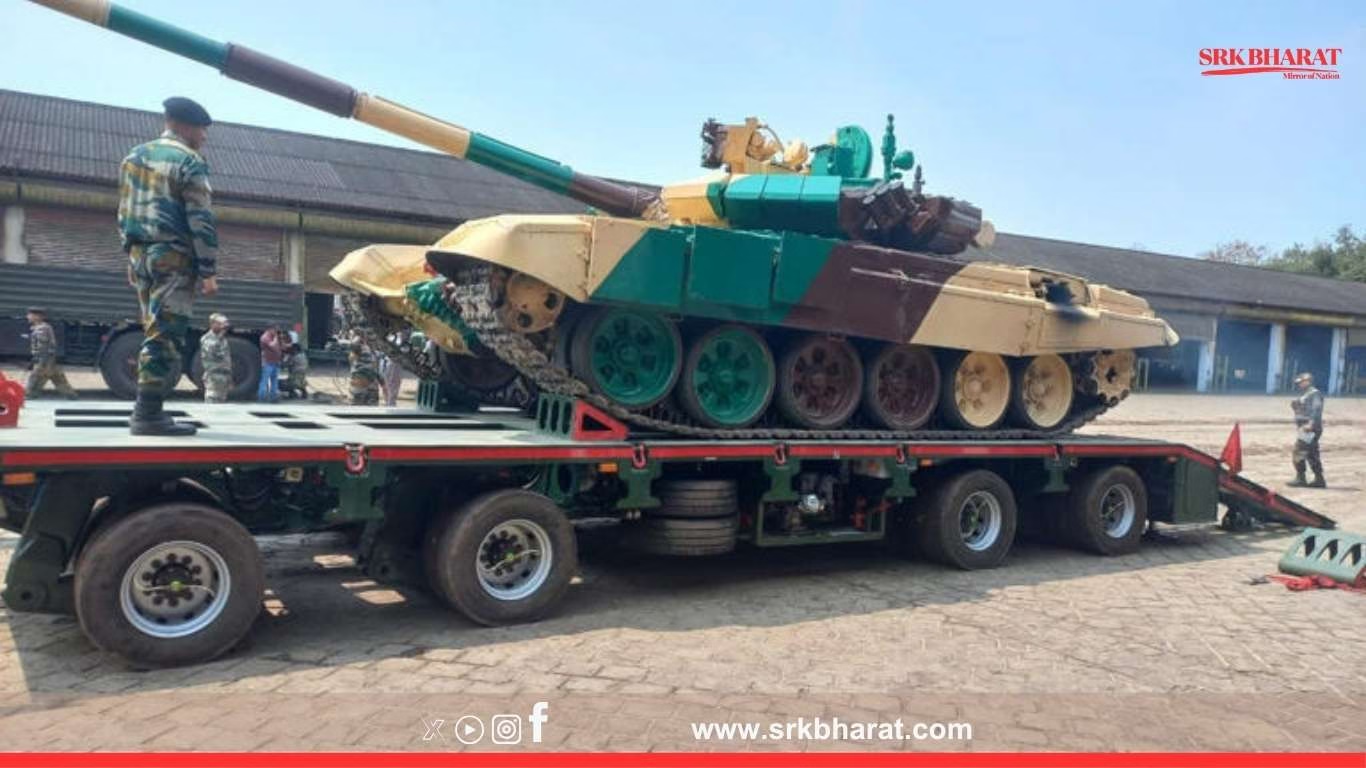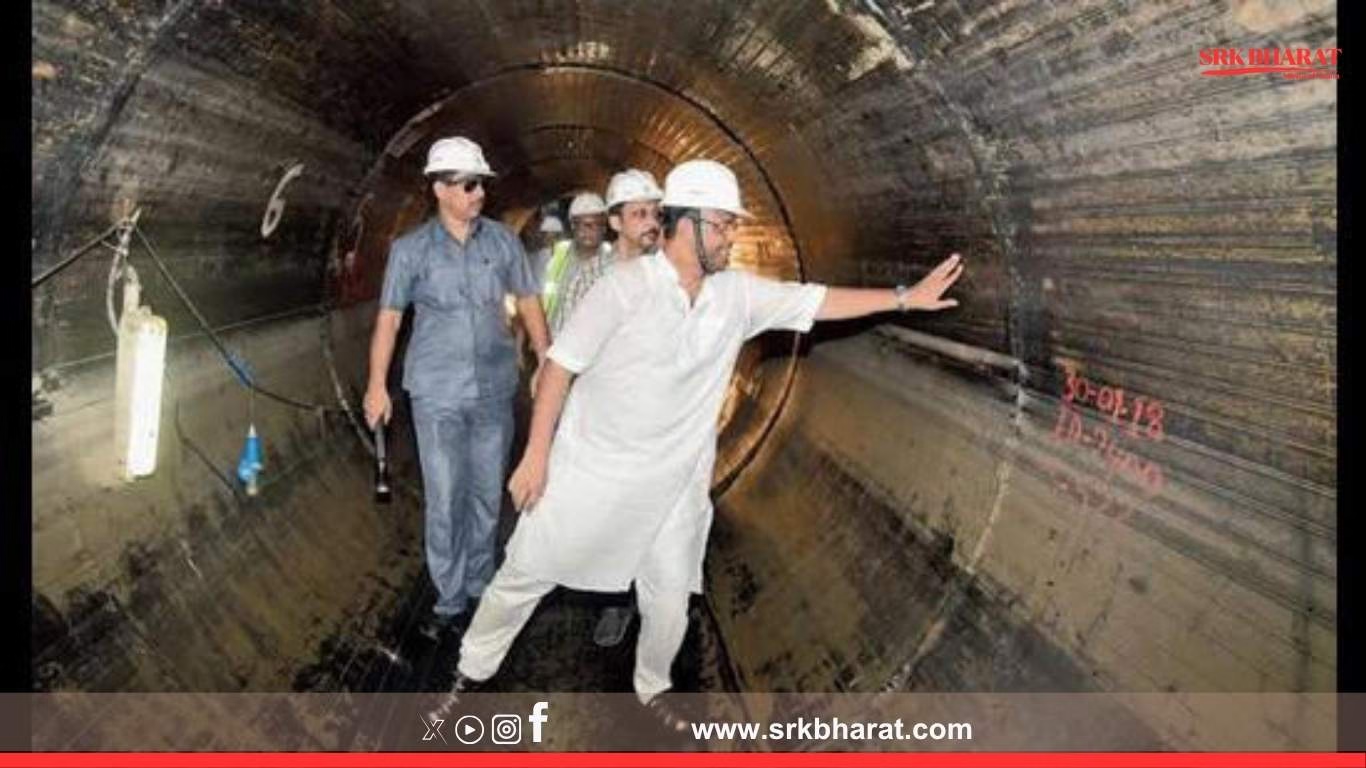The Godavari river basin is witnessing a fresh surge in water levels as intense monsoon rains continue to lash Telangana, Andhra Pradesh, Maharashtra, and Chhattisgarh. Authorities have sounded high alerts in multiple flood-prone districts, urging residents to remain vigilant and local administrations to activate emergency preparedness measures.
Key Highlights
- Heavy rainfall across upstream catchment areas leads to rising Godavari levels.
- High alert issued in Telangana’s Bhadrachalam and Andhra Pradesh’s East Godavari districts.
- Relief teams deployed along low-lying villages vulnerable to inundation.
- Officials advise fisherfolk, farmers, and riverbank dwellers to shift to safer zones.
- Forecast predicts continued rainfall over the next 48–72 hours, heightening risks.
Water Levels Breach Danger Marks At Several Points
According to the Central Water Commission (CWC), the Godavari is flowing above the first warning level at Bhadrachalam, with fresh inflows from upstream tributaries such as Pranahita and Indravati adding to the surge.
Current Water Levels – Major Stations
| Location | Water Level (metres) | Danger Level (metres) | Status |
|---|---|---|---|
| Bhadrachalam (Telangana) | 49.0 | 50.0 | Rising, near warning |
| Dowleswaram (Andhra Pradesh) | 9.5 | 10.3 | Rising steadily |
| Polavaram | 35.4 | 36.6 | Close to warning level |
Officials report that heavy rainfall in Chhattisgarh and Maharashtra, especially in Gadchiroli, Chandrapur, and Nanded districts, is contributing significant upstream inflows, raising downstream flood risks in Telangana and Andhra Pradesh.
Administration On High Alert
Telangana
- Bhadrachalam sub-collector Himanshu Kaushik confirmed that alerts have been issued to all gram panchayats and mandals along the Godavari banks.
- National Disaster Response Force (NDRF) teams stationed in Kothagudem and Bhadrachalam are on standby for evacuation and rescue operations.
- The district administration has arranged boats, life jackets, emergency shelters, and medical aid to tackle any crisis.
Kaushik stated:
“We are closely monitoring inflows from upstream districts. All vulnerable habitations are being alerted, and village officials have been asked to maintain continuous communication with the control room.”
Andhra Pradesh
- East Godavari district collector Madhavi Latha has ordered round-the-clock vigil in Amalapuram, Konaseema, and Rajamahendravaram regions, where low-lying areas are prone to submergence.
- Control rooms have been activated in all vulnerable mandals, and flood gauges are being monitored every hour.
- Fishermen have been advised to avoid venturing into the Godavari, and warnings have been disseminated through village volunteers and local announcements.
Impact On Local Population
Residents in Bhadrachalam, Kunavaram, Chintur, Etapaka, Polavaram, and Devipatnam are witnessing rising water near riverbanks, prompting many to begin shifting livestock and household items to higher ground. Several villages are already facing partial inundation of agricultural fields, with paddy nurseries and horticulture crops submerged in knee-deep water.
Agriculture Departments’ Preliminary Assessment
- Paddy nurseries in East Godavari: 850 hectares affected
- Banana plantations in Khammam and Bhadrachalam: 520 hectares under threat
- Vegetable fields near river embankments: Early signs of submergence reported
Weather Forecast Intensifies Concerns
The Indian Meteorological Department (IMD) has forecast continued heavy to very heavy rainfall over Telangana, North Coastal Andhra Pradesh, and adjoining Chhattisgarh and Maharashtra for the next three days due to a persisting low-pressure area over the Bay of Bengal.
IMD Alert:
“Heavy rainfall exceeding 120 mm expected in isolated pockets. River catchments will continue to receive high inflows. Residents in flood-prone areas must remain alert.”
Historical Context Of Godavari Floods
The Godavari has a history of sudden flooding during intense monsoon spells, often leading to displacement of thousands, loss of livestock, and damage to standing crops and infrastructure.
| Year | Major Flood Incident | Impact Summary |
|---|---|---|
| 1986 | Historic floods in Andhra Pradesh | Over 1 lakh people displaced, massive crop loss |
| 2013 | Bhadrachalam submergence | 60 villages inundated, bridges damaged |
| 2022 | Monsoon floods in Telangana and AP | 40,000 evacuated, transport services paralysed |
Relief And Preparedness Measures
Both Telangana and Andhra Pradesh governments have ramped up flood preparedness:
- Stockpiling of essential commodities, including rice, dal, salt, and kerosene in vulnerable villages.
- Activation of 24×7 flood monitoring control rooms at district headquarters.
- Deployment of medical teams with snakebite and waterborne disease medicines in health camps.
- Engineers monitoring embankments to prevent breaches during peak flows.
- Coordination with CRPF, NDRF, and state disaster management teams for immediate evacuation when required.
Voices From Ground
Residents expressed worry over repeat flooding and inadequate embankment strengthening:
A farmer from Kunavaram village shared:
“We face the same situation every monsoon. Crops are washed away, and compensation is delayed. Government must build permanent flood shelters.”
A local sarpanch near Polavaram stated:
“We are shifting families to the school building. Boats are ready, but continuous rain makes it dangerous even for rescue teams.”
Experts On The Rising Flood Risks
Environmentalists warn that unregulated sand mining, construction in floodplains, and poor embankment maintenance are aggravating the impact of natural flooding.
Dr. Anuradha Rao, hydrology expert, stated:
“Climate variability is intensifying monsoon bursts. States must integrate river catchment management with floodplain zoning to reduce exposure.”
Government’s Long-Term Measures
In view of repeated floods, the Centre and state governments have prioritised:
- Strengthening river embankments and constructing retaining walls in vulnerable stretches.
- Setting up automatic water level monitoring stations for real-time alerts.
- Implementing community-led flood preparedness programs in disaster-prone villages.
Conclusion
The rising Godavari waters have yet again brought monsoon challenges to the forefront, highlighting the need for robust infrastructure, resilient farming practices, and integrated disaster management in India’s major river basins. As rainfall continues unabated, officials remain on high alert to prevent casualties and ensure swift evacuation wherever necessary.
Disclaimer
This news article is intended for informational purposes only. Readers are advised to follow official weather updates, district administration advisories, and the Central Water Commission alerts for real-time information and safety instructions during the ongoing monsoon flooding situation.











